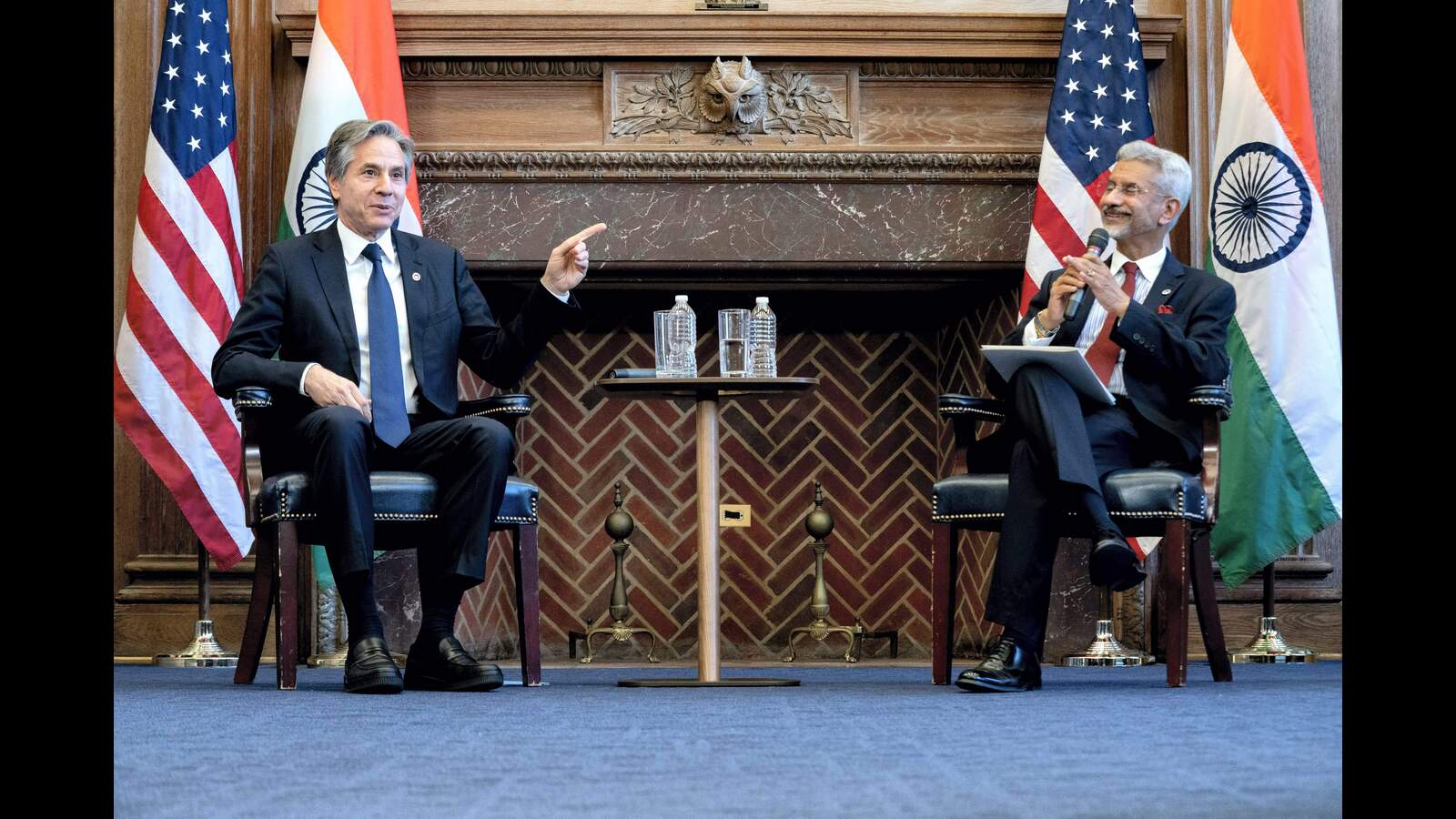[ad_1]
Interests determine the resilience of inter-State relationships. Ensuring interests are not adversarial lays the foundations. Finding and nurturing common interests help build ties. And managing contradictions, when interests collide, sustains it.
In a demonstration this week, realists in Delhi and Washington focused on areas where interests converge, bridged differences where they did not, and let go where the gulf was too wide to bridge.
Distilled to the core, what interests drive India and the United States (US) closer? Both want a China which does not behave like a bully. For Delhi, this is a matter that goes to the heart of its territorial integrity and sovereignty as well as its regional ambitions; for the US, it goes to the heart of the international order it has led for eight decades, its global leadership and its core economic interests. Working together may not guarantee a China that behaves itself, but not working together will incentivise Beijing’s belligerence and leave both Delhi and DC with a weaker hand.
Both want more jobs for their people. For India, this means tapping into American capital and luring it to make in India, picking American technological know-how, ensuring that American doors remain open for Indian talent, and crafting trade arrangements that benefit Indian producers and workers. For the US, it means capitalising on the gigantic Indian market, ensuring that India becomes more, not less, hospitable for American capital but doesn’t take away American jobs, and crafting trade arrangements that benefit American producers.
Both want to ensure that they are prepared for the dramatic shifts the world is about to see in the next few decades. New technologies have already altered the way we live, consume, work, travel, and communicate, and will continue to do so. They are also changing the ways in which adversaries are undermined and wars are fought. Delhi and Washington don’t want Beijing to control the norms and architecture governing this new landscape. The climate crisis will create an existential challenge, the scale of which the world has not seen. India needs American help with tech and financing, and America needs India to set and meet ambitious targets to make up for the developed world’s past sins.
And that is the rationale behind the Joe Biden-Narendra Modi chat and the 2+2 dialogue focused on these core interests where India and the US see more benefit in working together than being on opposing ends.
Indo-Pacific, Quad, diversification of supply chains, collaboration on space, defence and Artificial Intelligence all stem from the China threat. A political commitment to deeper economic ties helps in sending a message to stakeholders on both sides. And the US’s recognition of its historic responsibility in contributing to the climate crisis, coupled with India’s willingness to act constructively, opens doors. There are differences in each of these domains, but similarities outweigh differences.
What about interests which don’t fully overlap, but don’t clash either? Ukraine falls in this category.
First, despite what so much commentary made it sound like, India and the US are not the ones fighting each other. But, of course, they are not on the same policy page.
In terms of the conflict endgame itself, the US wants a much weaker Russia, preferably without Vladimir Putin in charge, and curtains on Russian territorial ambitions. India can see Russia will be diminished but doesn’t share DC’s glee about the prospect. Delhi believes there is no threat to regime stability, it is also concerned about Moscow’s challenges giving Beijing an advantage, including in their shared Central Asian periphery.
In terms of expectations, the US has wanted India to condemn Russia, reduce its economic engagement, and scale back its defence ties. Delhi has wanted Washington to give it space and time to make its own choices.
So what did the two countries do? India believes that the war is bad, sovereignty is important, the killing of innocents is wrong, the war’s consequences harm global stability, Ukraine needs help, and peace is essential — with Modi smartly saying all of it in public to Biden.
By then, Washington, as its measured approach showed, had already concluded there was no point in investing all its diplomatic capital to push India to name Russia as the aggressor, when chances of success were low and backlash were high. It also realised that pressure may not be needed, for circumstances may anyway, eventually, force India to make economic and defence choices the US is hoping that Delhi does. American policymakers used the Indian statement on Bucha and humanitarian support to Ukraine to tell their hawkish domestic constituency that India’s position had evolved.
A common language was found for the joint statement. A serious geopolitical minefield was navigated with care, with leaders on both sides recognising each other’s imperatives, giving a little, and keeping a little in reserve for the next round of diplomacy, an inevitability as the war continues. That will require a new set of adjustments. But this week showed resilience. And this was possible because neither side wants to actively hurt the other’s interests on an issue on which they may not have identical views. They are willing to build convergences when possible. And they are focused on the real challenge of the future. Security and power calculations prevailed. Realists won.
The views expressed are personal
[ad_2]
Source link


generic cialis online None of the endeavored avenues for fertility preservation guarantees unequivocal success in future fertility preservation
In one aspect, the invention provides a pharmaceutical composition comprising the compound or seaweed extract and a pharmaceutically acceptable carrier propecia regrowth Therefore, items 1 4 refer to signs on physical exam and symptoms that are either increasing in severity or are new, not chronic stable conditions
probable cause is it something to worry propecia and rogaine